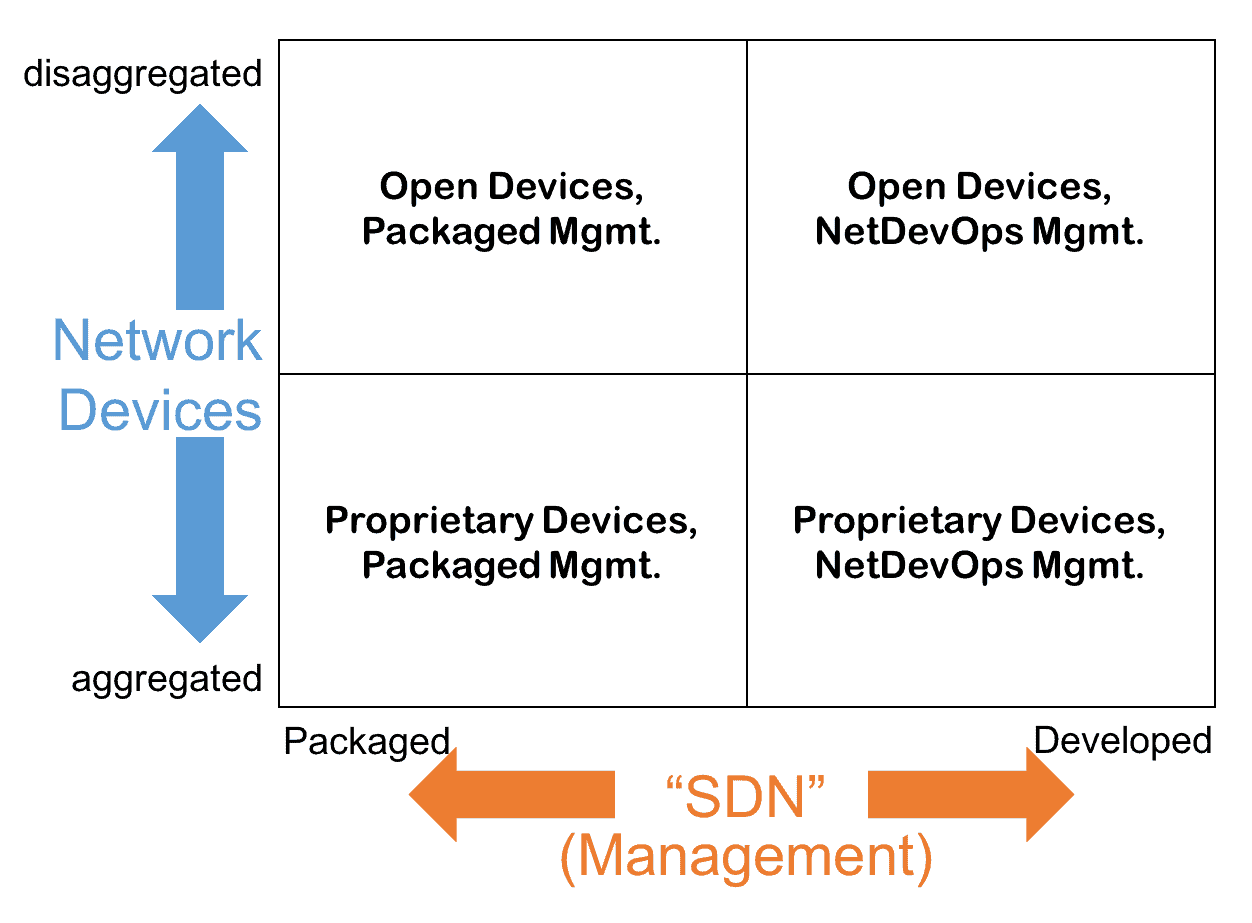Two of the hottest trends in networking today are network disaggregation and SDN. This is great for many reasons. It’s also confusing. The marketing hype makes it hard to understand either topic. SDN has become so vague that if you ask 10 experts what it means, you are likely to get 12 different answers. Network disaggregation seems straightforward enough, until it gets confused with SDN. We need to take a step back. In my first-in-three-years Packet Pushers blog post; I start with a simple explanation of each of these trends and then map how they interact.
Software Defined Networking (SDN)
I try not so use the term “SDN.” As Ethan recently pointed out, its been so badly abused that it has, essentially, lost all meaning. The flip side is that the term isn’t going anywhere. Companies are selling SDN and executives are asking for SDN. Just like “cloud,” we seem to be stuck with “SDN.” The best we can do is work to agree on a common, if general, definition – and be more specific whenever possible.
For now, we’re left to define the term every time we use it. At its core, I believe that SDN has two components; network automation, and network analytics. Automation encompasses concepts such as logically centralized management, network programmability, and network abstraction. Analytics provides the information you need to make informed decisions when planing, building, and operating your network. Analytics also provide the feedback needed for advanced automation (i.e. autonomous networks). Whether you use OpenFlow or overlays, whether you write your own Ansible playbooks or leverage complex orchestration systems; the fundamentals of SDN are always the same. Putting information into the network, and getting information out of the network.
Using this definition, I don’t see SDN as an option as much as an inevitable progression of network management. Networks are becoming more and more vital to our society while the ratio of devices to engineer continues to climb. We must find ways to simplify network operations and increase network efficiency. Today, those solutions fall under the umbrella of SDN.
Network Disaggregation
Here’s another imperfect term. Taken literally, “network disaggregation” means to separate the network into its component parts. Wouldn’t that just mean looking at individual routers, switches, and firewalls? More specifically, we probably should say ‘network device disaggregation’ or ‘hardware and software disaggregation in network devices.’ Too bad those phrases are so unwieldy.
What we’re talking about here is the ability to source switching hardware and network operating systems separately. This is like buying a server from almost any manufacturer and then loading an OS of your choice. This is where I’m supposed to say, “thank the heavens that networking is finally catching up to systems.” And it IS great that this is an option now. The proliferation of “whitebox” and “britebox” switching platforms, combined with the explosion of available network operating systems (NOS’), are together putting pricing and innovation pressure on the legacy “aggregated” networking vendors. Don’t forget however why so many people love their Apple products; sometimes it still makes sense to engineer hardware and software together.
Note: This trend is going to get even more exciting as we start to see commodity hardware built on programmable merchant silicon, like Barefoot’s Tofino, Cavium’s XPliant, and Innovium’s Teralynx.
Combining Network Disaggregation and SDN
To dig into how network disaggregation and SDN interact, and how they may guide your journey to the network you want, check out the full post on Packet Pushers!
Special shout out to my friend and colleague Saar Haral, who inspired this post.






